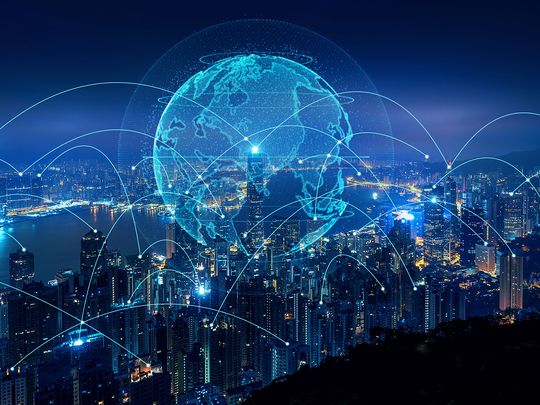
The Middle East's telecom sector is buzzing with activity, driven by surging smartphone use, soaring demand for faster internet, and ongoing government initiatives to embrace digitalization. This has led to ongoing investments in 5G infrastructure, boosting connectivity across the region.
Smart cities, e-governance, and digital inclusion initiatives are all driving demand for advanced telecom services. Over the past five years, bandwidth consumption in the Middle East has grown at a CAGR of just over 30 per cent.
However, this future is also heavily reliant on international submarine cables carrying telecommunications traffic between the Middle East and the rest of the world. The Bab-el-Mandeb Strait is 30 kilometres at its widest, between Yemen in the east and Djibouti and Eritrea in the west and connects the Red Sea to the Gulf of Aden and the Arabian Sea. This narrow strait is home to several international submarine cables making it one of the world’s ‘chokepoints’.
Submarine cables, recognized by most nations as critical infrastructure, must be protected from external aggressions, be they natural or human. Accidents have traditionally been the cause of most submarine cable faults and outages while geopolitical challenges can prevent laying new submarine cables or performing maintenance operations on existing ones.
There is a significant overlap between global cargo shipping routes and submarine telecom cables, as traditionally both have similar goals in mind – connecting large population centers over the shortest paths to reduce latency and costs. This also explains why most cable faults are caused by shipping vessels, such as cargo ships dragging anchors or fishing boats scouring the seabed with fishing nets.
Significant time and money have been invested to provide knowledge and training to all kinds of marine vessels, so operators are aware of the location of both telecom and power submarine cables so appropriate precautions are taken when operating near submarine cables. Accidental human aggressions usually result in a single cable fault.
Another cause of submarine cable faults is natural, such as tsunamis, typhoons, undersea volcanos, earthquakes, and landslides, which can damage several cables. For example, undersea earthquakes can initially affect multiple submarine cables and again over time during aftershocks. Tsunamis and typhoons can flood cable landing stations or damage cables by causing landslides from shorelines onto the seabed.
Safeguarding those cables
So how does one protect against such unpredictable outcomes? By routing submarine cables in less risky routes, such as away from seismically active undersea zones, where possible.
However, nature can be highly unpredictable. Operators plan for sudden disasters by building multi-route mesh protected networks to intelligently route and re-route critical traffic to multiple cables and landing stations.
Although the submarine network industry has implemented a variety of ways to minimize submarine cable faults, outages will still occur, as one cannot plan for the unknown. Education and training for marine vessel operators is critically important to reduce the number of cable faults, especially when this is the major cause, but it’s an incomplete solution.
For unexpected natural events, network operators are best advised to lay new cables along highly diverse routes—even when they are not the lowest cost along the shortest traditional route—and then land these cables in new cable landing locations.
Submarine cables, and the stations where they make landfall, must continue to be diversified along new routes to new locations. In many cases, this is far easier said than done, because challenges are not related to technology or cost but rather politics, international tensions, and other factors.
We don’t know what the future holds for the major chokepoints around the world, but we do know that the resiliency of submarine cables routed through them will increasingly be top of mind for those using them.









